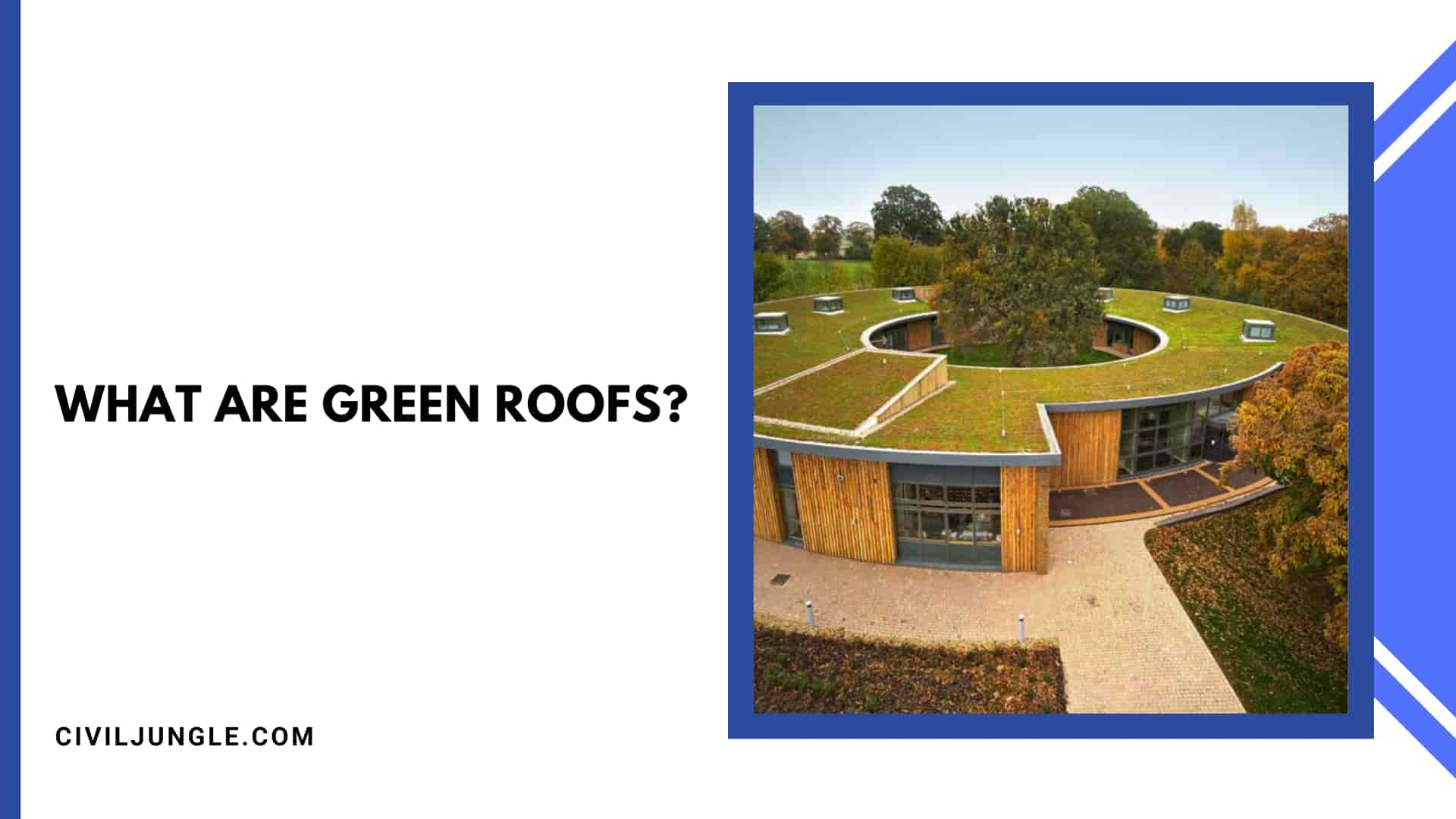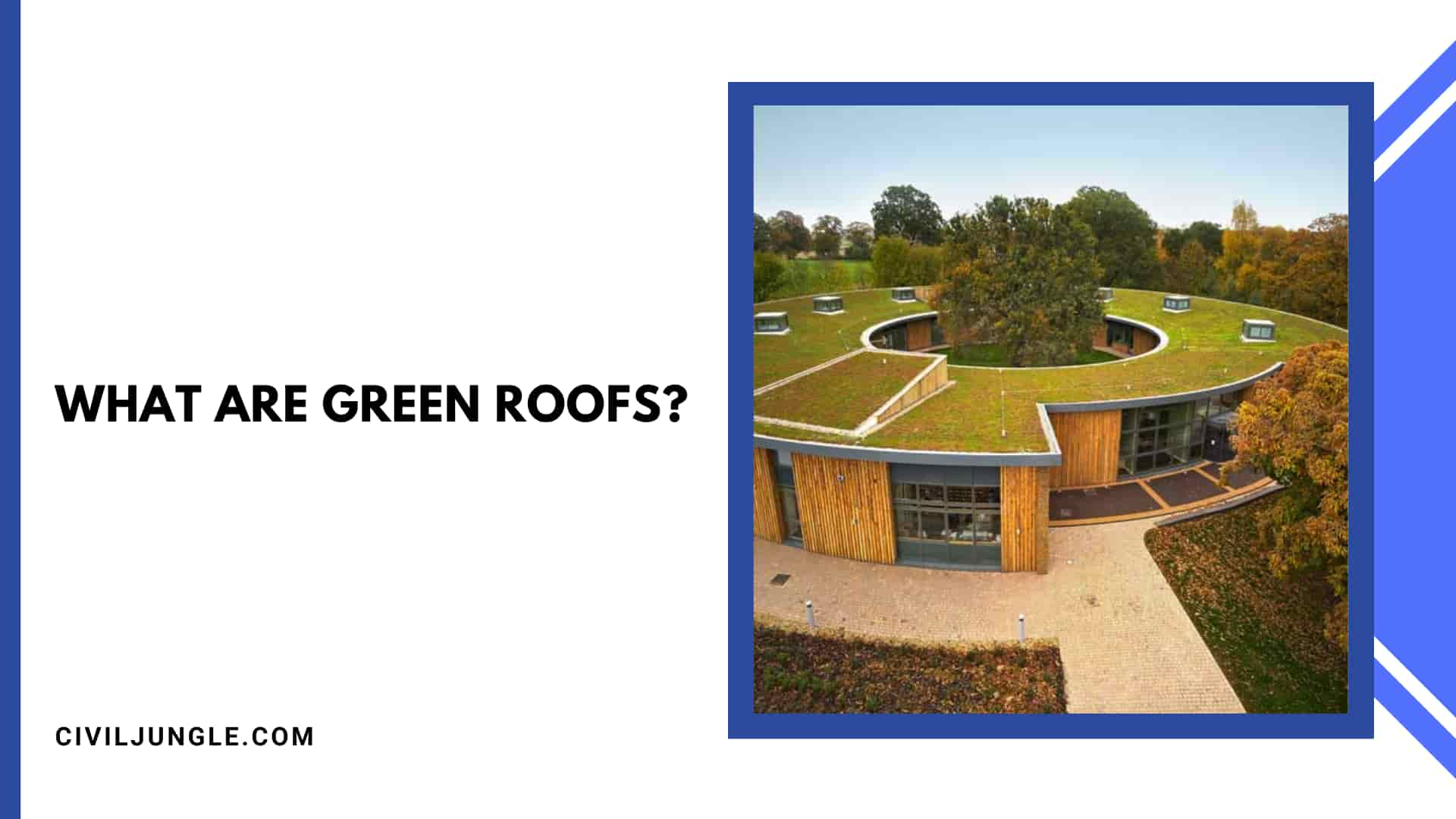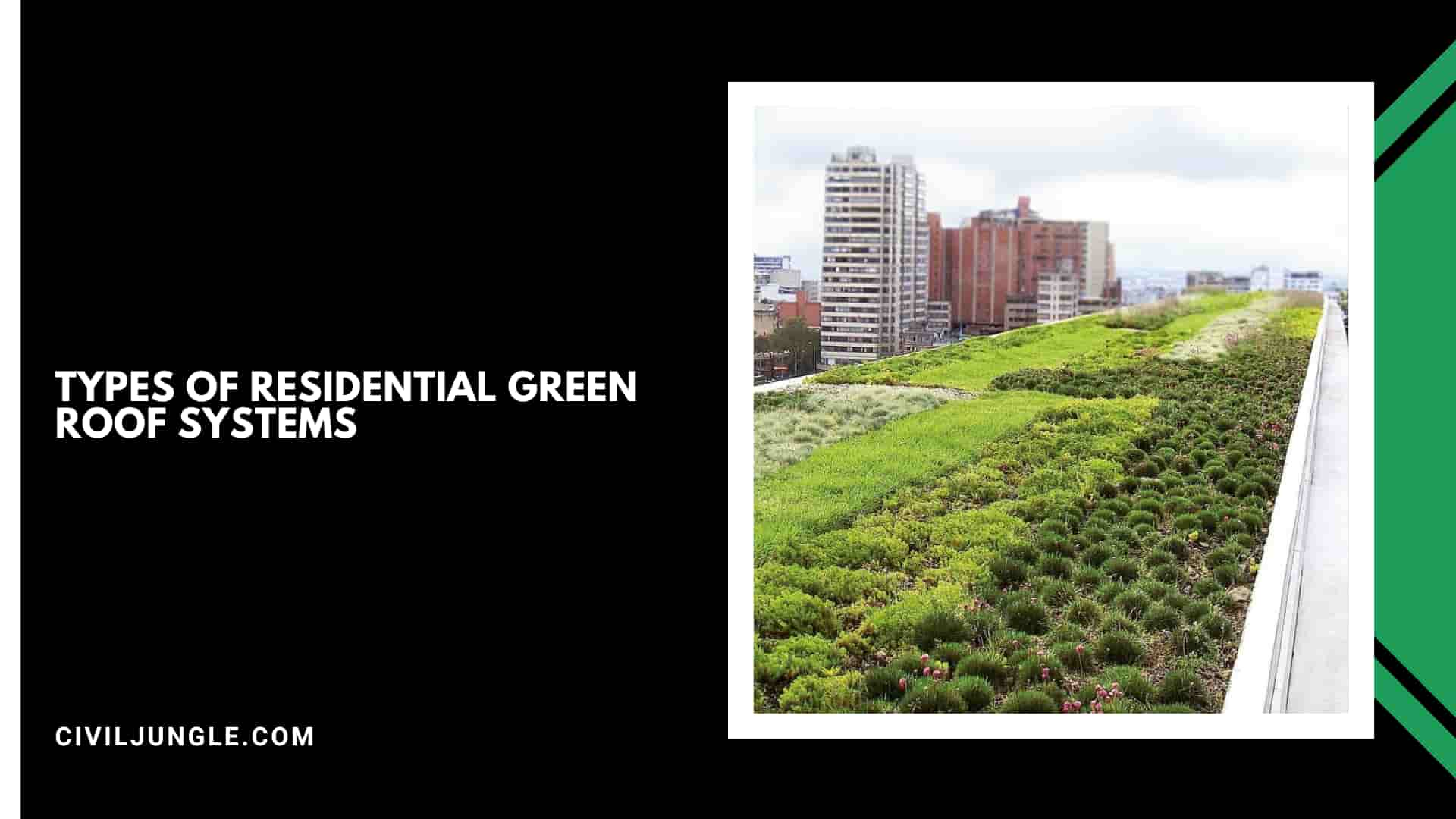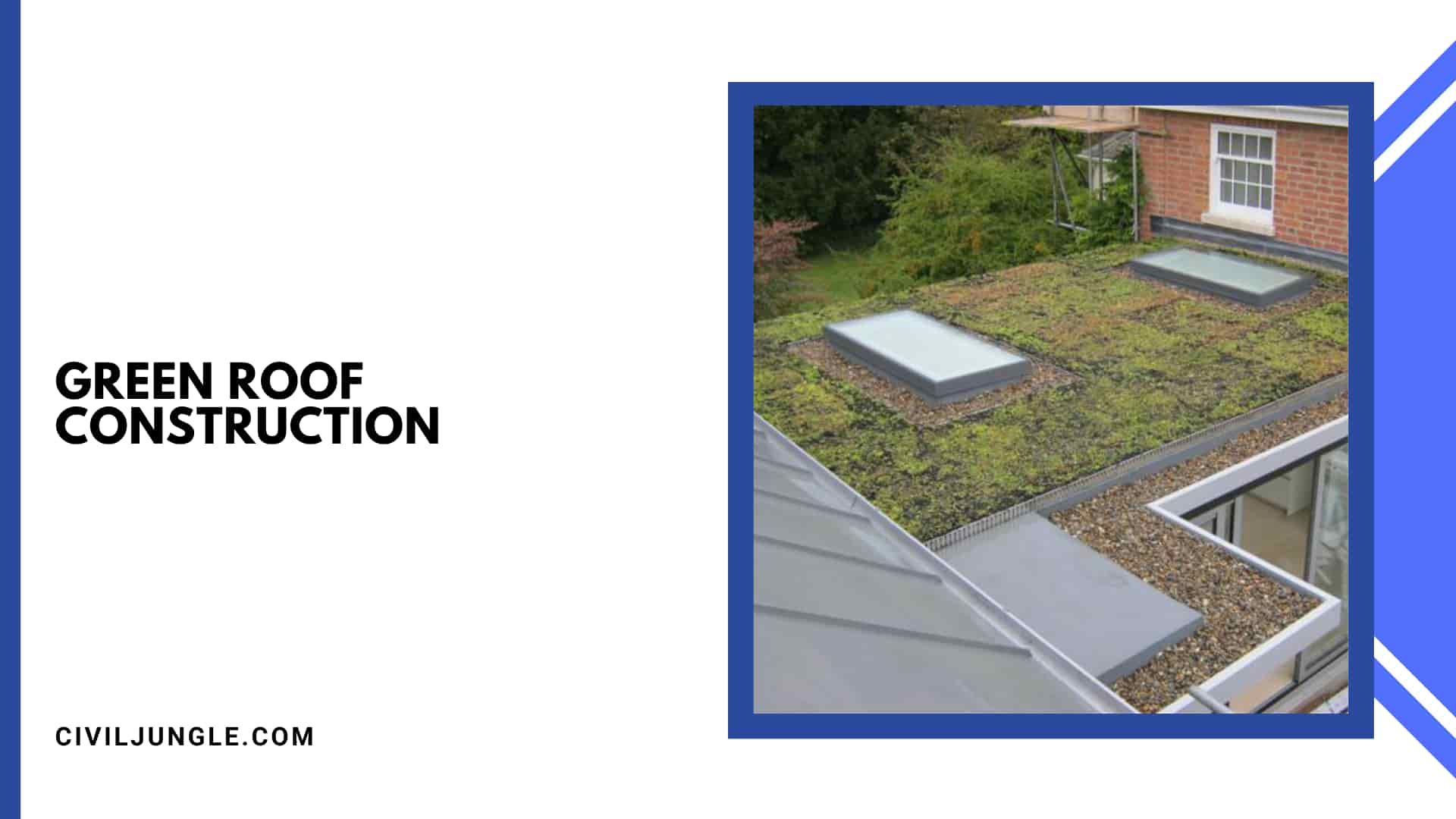Residential Green Roof Systems
Important Point
Residential green roof systems, sometimes referred to as interlock roofing systems, include high-quality waterproofing, root-repellent systems, drainage systems, filter cloth, a lightweight growing medium often made from materials like rockwool safe and sound, and plants.
Drainage layers, filter cloths and media, and plants can be pre-prepared in movable grids that often interlock, or they can be loosely laid/built up so that each component of the system can be installed separately. Modular green roof systems are the most common.
An “enclosed” green zone above a man-made structure is what is meant by the term “green roof.”
All of these green spaces are independent of the ground and can be located either below or above grade.
Green roofs have been successfully installed in countries all over the world and can give numerous public and private benefits.
Despite the efforts of industry experts, the benefits of green roof technology are little understood in North America and the sector continues to mature.
These technologies, on the other hand, have grown well-established throughout Europe.
Legislation and funding from the government were instrumental in making this happen.
Green roofs enjoy widespread public support because of their numerous advantages, both seen and implausible.
Green roof products and services now enjoy a thriving multi-million dollar market in countries like Germany, France, Austria, and Switzerland.
Additionally, the use of green roofs in urban areas provides a great opportunity for a wide range of social, economic & environmental impacts.
Also Read: Fiberglass RV Roof Replacement
What Are Green Roofs?
A green roof system is an extension of the existing roof which involves, at a minimum, high-quality waterproofing, a root-repellent system, a drainage system, filter cloth, a lightweight growing medium, and plants.
A green roof can be installed on almost any flat surface, as well as roofs with a small slope.
The use of sedum in green roofs means they can be installed in almost any climate and will help in adverse weather conditions of all kinds, from heatwaves to rainstorms.
Types of Residential Green Roof Systems
In terms of residential green roof systems, there are three main categories. They’re as follows:
1. Extensive Green Roofs
The use of extensive green roofs is appropriate for environmentally friendly retrofits and residential roofs with modest slopes.
After the first year, they don’t require any watering to grow arid grasses.
2. Intensive Green Roofs
Intensive green roofs, often known as rooftop gardens, are a type of intensive green roof.
Vegetable gardens, playgrounds, and walkways are just some of the many uses for these structures.
Plants and trees can be accommodated, although constant maintenance is required.
3. Semi-Intensive Green Roofs
There are two types of green roofs: intensive and extensive. Semi-intensive green roofs combine the two.
In order to get both the environmental benefits and the wide range of gardening options that green space provides, it is a combination.
Also Read: Elastomeric Vs Silicone Roof Coating
Green Roof Construction
Even with the help of experienced workers, installing a green roof, especially with interlock roofing system, is a complex undertaking.
Your contractor will handle much of this work, such as building the numerous modular containers, but if you’re confident and physically fit, you can complete some of the jobs yourself.
Doing any of the work on your own is at your own risk and could result in serious injury or damage to your roof or yourself.
Before attempting any of these procedures on your own, make certain you can do so securely and thoroughly.
You should think about whether your roof is flat or sloping when considering whether or not green roofing is ideal for you.
Protective layers are reduced when the design is “pitched” (often referred to as “slanted”), which minimizes the chance of water damage.
A structural engineer can help you determine whether or not your home or structure can handle the weight of a green roof.
If your roof isn’t strong enough to hold the weight of a single modular container, for example, you run the risk of permanent damage.
It’s also a good idea to ask your contractor if there are any modifications that can be made to the roof to make it more capable of supporting the weight.
A coating of pitch (a resin typically used for planting) must be set down once you have the appropriate data and approval to proceed with the project.
This will divert any extra rainwater to the drainage pipes, reducing moisture damage to your products in the long run.
There should be at least 1/4 inch of the pitch in each of these layers.
The plant trays are the next thing to be added. There must be at least four months of growth in each of these plants before they can be installed on the green roof.
The soil elevators will be wrapped in plastic to protect them from the heat as they are shipped to you if you acquire them from a contractor (which is recommended).
The trays can be put after the roof has been prepared with protective edgings. Starting at the lowest point of the roof, trays are arranged in rows.
Workers on a sloped roof will make their way up the gradient in ascending order.
In this case, they’ll choose an edge depending on how you want the flora to grow aesthetically, building in the same systematic approach that you did.
To finish up, you can use the edging to wrap around the trays.
The plastic clips on the trays’ edges can be used to connect the planters once they’ve been placed. As a result, your green roof will be safe and secure, yet you will be able to relocate each of the pots as you see fit.
The feet on these trays prevent the plants from resting straight on top of your house, which is a safety concern.
It’s possible that you’ll have to remove some of the final trays from each row to make the flora fit snugly on your roof, depending on how well they fit.
A wax pencil is commonly used to indicate the parts that need to be trimmed before a concrete saw is used to cut through them after the space has been measured.
Planters contain dense aggregate, which means a less-skilled saw would be useless for this work, so choose wisely.
Taking down the soil elevators is now the proper time. It is possible for water, nutrients, and other beneficial creatures to move freely from one planter to the next, thanks to the usage of these devices.
Make sure you draw the soil elevator out at an angle to avoid injuring the plants if you are completing this step on your own.
Edging has to be attached to the roof, and the plants must be watered once the trays have been set in place. To assist them in adjusting to their new surroundings, you may want to give them some water.
Green Roof Benefits
Having a Residential Green Roof System, especially those with flat roofing membranes, can have a number of advantages for a homeowner, their neighborhood, and the environment.
- Savings on cooling and heating. As a natural superinsulator, a green roof can keep a house warmer in the winter and cooler in the summer.
- Convection heat loss can be reduced by up to 50% with the use of a green roof, according to German research.
- In the spring and summer, Canadian research indicated that a green roof reduces the average daily energy demand for air conditioning by up to 75%.
- Reduced influence on noise pollution. A green roof’s plant and soil mixture absorb and deflect sounds from the outside.
- biodiversity and natural beauty. For aesthetic reasons, green roofs are preferable to other types of roofs, and they also provide residents with an extra level of outdoor living space.
- In urban and suburban regions, green roofs fill a hole caused by the development of new homes, providing food and shelter for native birds and insects.
- Rainwater discharge has been reduced significantly. During rainstorms, a green roof serves as a sponge, soaking up 40 percent of the water.
- Many of the contaminants that precipitation has sucked from the air are then filtered out by plants, soil, and the root system, resulting in considerably cleaner discharge.
- Another benefit of using green roofs is that they can help alleviate congested municipal sewer systems by delaying the flow of rainwater into them by roughly 45 minutes.
- The air is cleaner and there is more oxygen in it. Increasing the number of plants has been shown to result in cleaner air, as plants absorb carbon dioxide from the atmosphere and produce oxygen as a byproduct of photosynthesis.
- In a year, a typical family utilizes more oxygen from plants on a residential green roof than the plants produce.
- Urban heat island impact is reduced. The removal of vegetation for the construction of houses, businesses, and parking lots causes the urban (and suburban) heat island effect, which raises the temperature in developed regions.
- Smog levels rise, heat-related illnesses worsen, and cooling demand rises as a result of rising temperatures.
Challenges With Green Roofing
- In spite of the fact that green roofing can help you and the community, it is an expensive process that may result in additional costs.
- In the event of a drought or an unexpected storm, insurance for green roofs is a must, but it is also costly.
- If the weight of the green roof causes it to sag, it could lead to liability concerns.
- Repairs will be necessary if the plants do any harm to the building, such as roots growing into the shingles.
Cost of Green Roof
It costs between $15 and $25 per square foot to install a green roof for intense roofing and $10 to $20 per square foot to install one for an extended roof.
The soil and growth concentrates, as well as the plants, account for a large portion of this expense.
Depending on whether or if you want your plants to be individually planted or cultivated on a vegetation mat, the cost of this service may rise or fall significantly.
Transporting these parts to your location may be costly, despite the fact that they are not difficult to locate.
Residential Green Roof Systems in Germany typically cost between $8 and $15 per square foot, which is a significant contrast.
Since this is a brand-new market in the US, there has been an upsurge in custom projects as a result.
The cost of ongoing maintenance should be factored into the budgeting process when undertaking a project of this nature.
With a wide green roof, the cost of this may be less frequent, but it is still a significant investment.
As a rule, this cost is between $0.75 and $1.50 per square foot.
Also Read: Top 50 Roof Over Patio Ideas
Green Roofs: Who Should You Talk To?
In order to ensure the safest and most cost-effective installation of a green roof, there are a few people to contact.
A structural engineer can help you determine if your roof can support the additional weight of this work, as well as what other steps you may take to keep your house safe.
Your Residential Green Roof System may need to be re-stabilized if its weight of it shifts or changes. This may necessitate moving the planters around for better support and safety.
Re-stabilizing parts of your roof could make a significant impact in protecting your assets.
Second, get in touch with a reputable contractor to discover if they have experience installing green roofs and to receive a price estimate.
Before making a decision, it’s a good idea to research all of your possibilities, even if you plan to handle the task yourself.
Third, contact a company that specializes in growing plants for green roofs.
Regardless of whether you use a contractor or not, the price of these items should be taken into account.
Think about how far away the group is from where you are, and you’ll get an idea of how much transportation costs will be.
The intensive or extensive formats can be discussed during this time as well, which can assist you in making a decision on how to proceed going forward.
The next step is to talk to folks who reside in your building or relatives and friends if you intend to accomplish this on your own and get all the information you need to make an informed decision on the project’s path.
That being the case, you may certainly make use of the help of individuals around you to make things go more smoothly, whether it’s in terms of helping out with physical work on the installation day or acquiring any supplies you’ll require.
To the fullest extent permissible by law, RoofingCompare is supplied “as is” and without guarantee of any kind, either express or implicit, including but not limited to the implied warranties of merchantability, suitability for a specific purpose, or non-infringement.
Like this post? Share it with your friends!
Suggested Read –
- 16 Types of Dams
- Stone Cladding – Best Guide
- What Is Lintel And Their Types
- Which Is Better Flat Roof Vs Pitched Roof?
- French Windows Vs Casement Windows & Best Guide
What Is a Green Roof System?
A green roof system is a layered system installed on top of a roof that supports vegetation growth. It typically includes waterproofing, root repellent, drainage layers, filter cloths, a lightweight growing medium, and plants.
What Are the Benefits of Installing a Green Roof?
Green roofs offer numerous benefits, including improved insulation for energy savings, reduced urban heat island effect, stormwater management, increased biodiversity, noise reduction, and aesthetic appeal.
Can Any Roof Support a Green Roof System?
Not all roofs can support the additional weight of a green roof. A structural engineer should evaluate your roof to determine if it needs reinforcement to support the system.






Leave a Reply